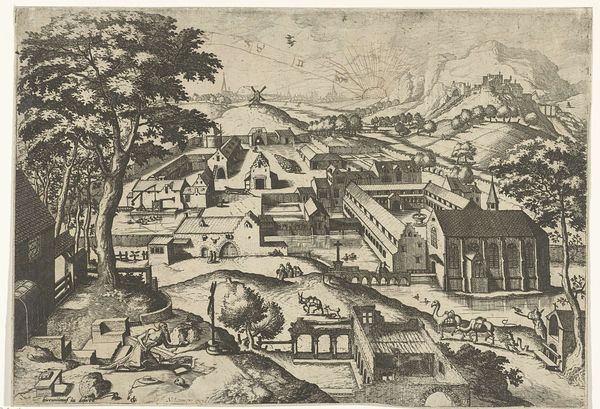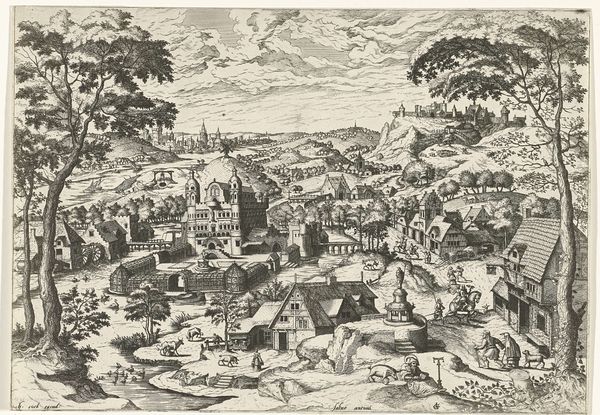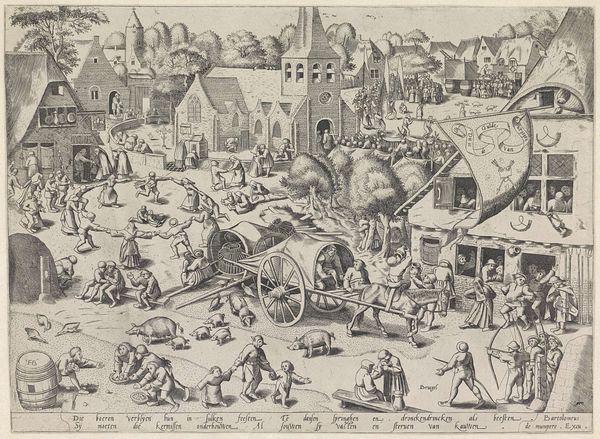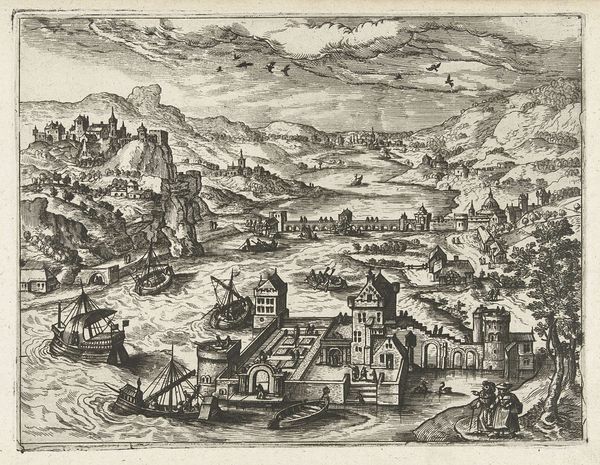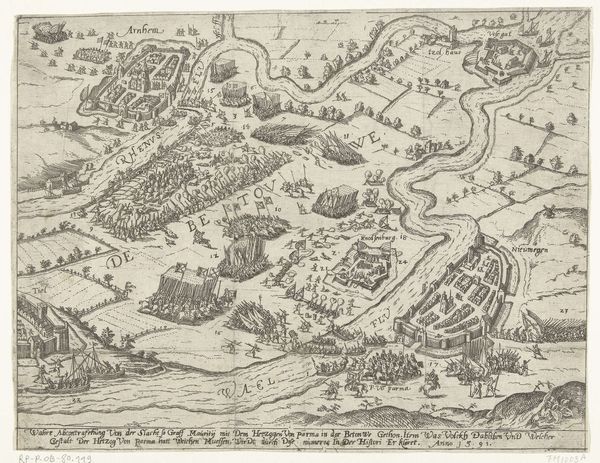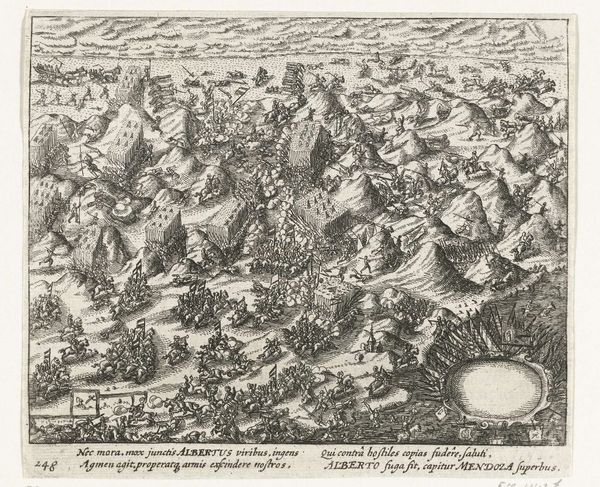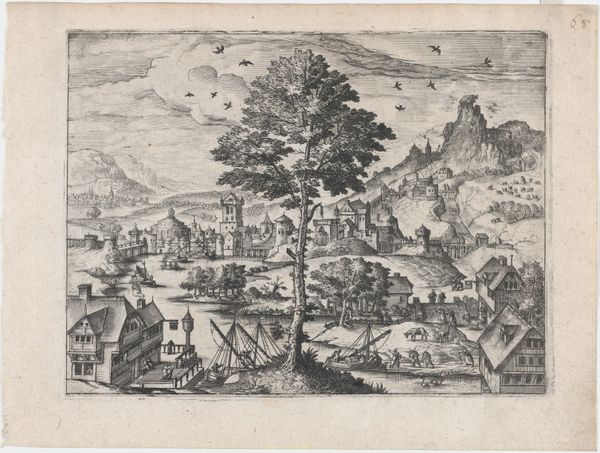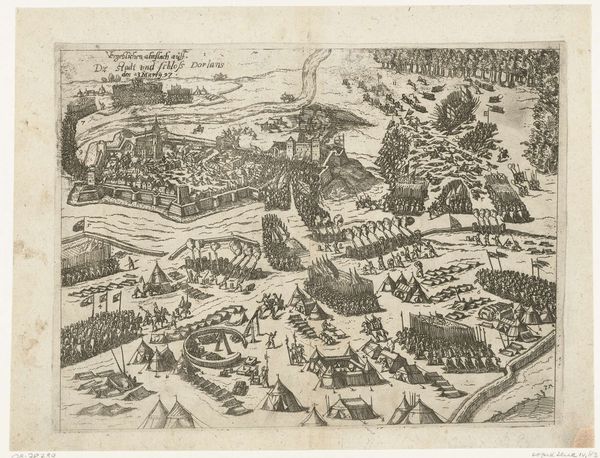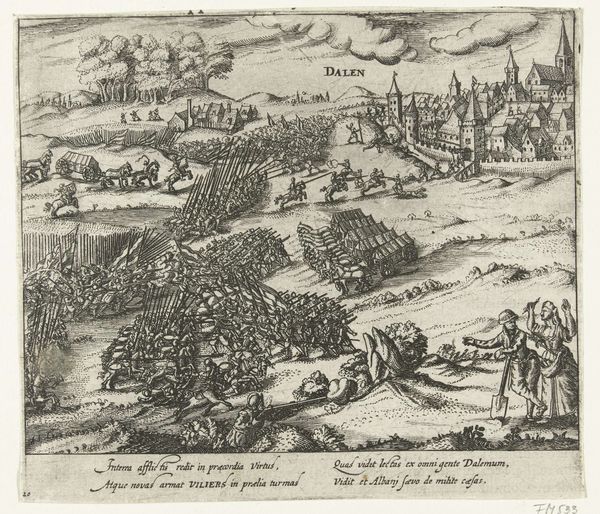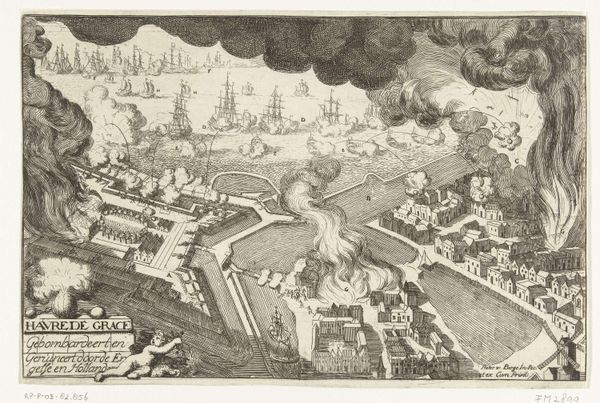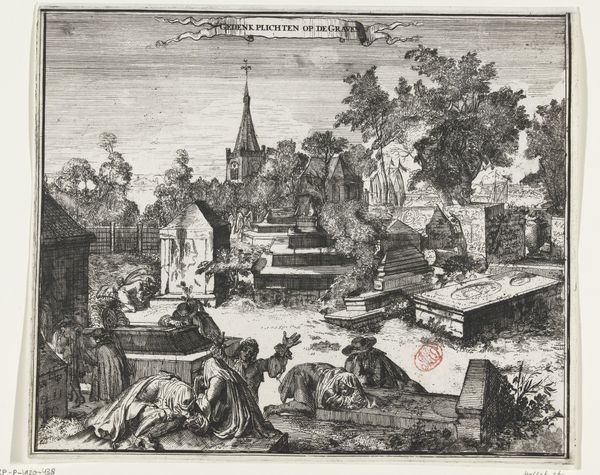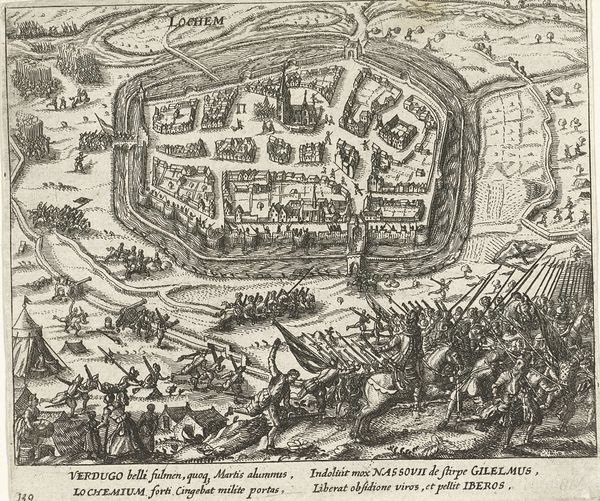
print, engraving
#
pen drawing
# print
#
pen illustration
#
pen sketch
#
landscape
#
mannerism
#
engraving
Dimensions: height 229 mm, width 320 mm
Copyright: Rijks Museum: Open Domain
Editor: Here we have “Abraham met de engelen in een landschap,” or “Abraham with the angels in a landscape,” an engraving from the 1560s by Johannes or Lucas van Doetechum, currently housed at the Rijksmuseum. The chaotic, almost overwhelming detail of the print makes me feel a sense of unease, especially with the fire blazing in the distance. What historical narratives are embedded within this piece? Curator: This engraving serves as an interesting window into 16th-century anxieties surrounding religious morality and societal judgment. The burning city in the background is likely Sodom, referencing the biblical tale of divine retribution. Consider how the artists use the landscape not just as a backdrop, but as an active participant, reflecting the tumultuous events unfolding. What do you notice about the figures and their placement within the landscape? Editor: The angels seem almost detached from the destruction; they’re quite serene compared to the fiery chaos behind them. Abraham, kneeling, also looks very isolated. It's as if they inhabit different realms within the same plane. Curator: Precisely. This separation emphasizes the artists’ message of moral choice. Abraham, through his faith, is distanced from the condemned city. Consider the role of printmaking during the Reformation. How might this image function as a form of moral instruction within that context, distributed and displayed in public spaces and private homes? Editor: It becomes less about pure artistic expression and more about accessible religious commentary, using dramatic visuals to convey a message. Like a sermon in ink. Curator: Exactly. And its presence in the Rijksmuseum today asks us to consider the evolving role of art – from religious instruction to historical artifact to an object of aesthetic appreciation. Editor: That reframing really makes you think about how art shifts with the context it’s in. I didn't consider its instructional role when I looked at it initially.
Comments
No comments
Be the first to comment and join the conversation on the ultimate creative platform.
